
How to Use 12V 4.5AH BATTERY: Examples, Pinouts, and Specs
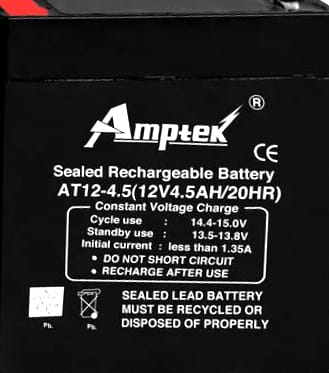
 Design with 12V 4.5AH BATTERY in Cirkit Designer
Design with 12V 4.5AH BATTERY in Cirkit DesignerIntroduction
The 12V 4.5AH battery is a sealed lead-acid (SLA) rechargeable battery that provides a nominal voltage of 12 volts and a capacity of 4.5 ampere-hours (Ah). It is widely used in applications requiring reliable and long-lasting power, such as uninterruptible power supplies (UPS), emergency lighting, alarm systems, and small-scale renewable energy systems. Its compact size and maintenance-free design make it a versatile and convenient power source for various electronic devices and systems.
Explore Projects Built with 12V 4.5AH BATTERY
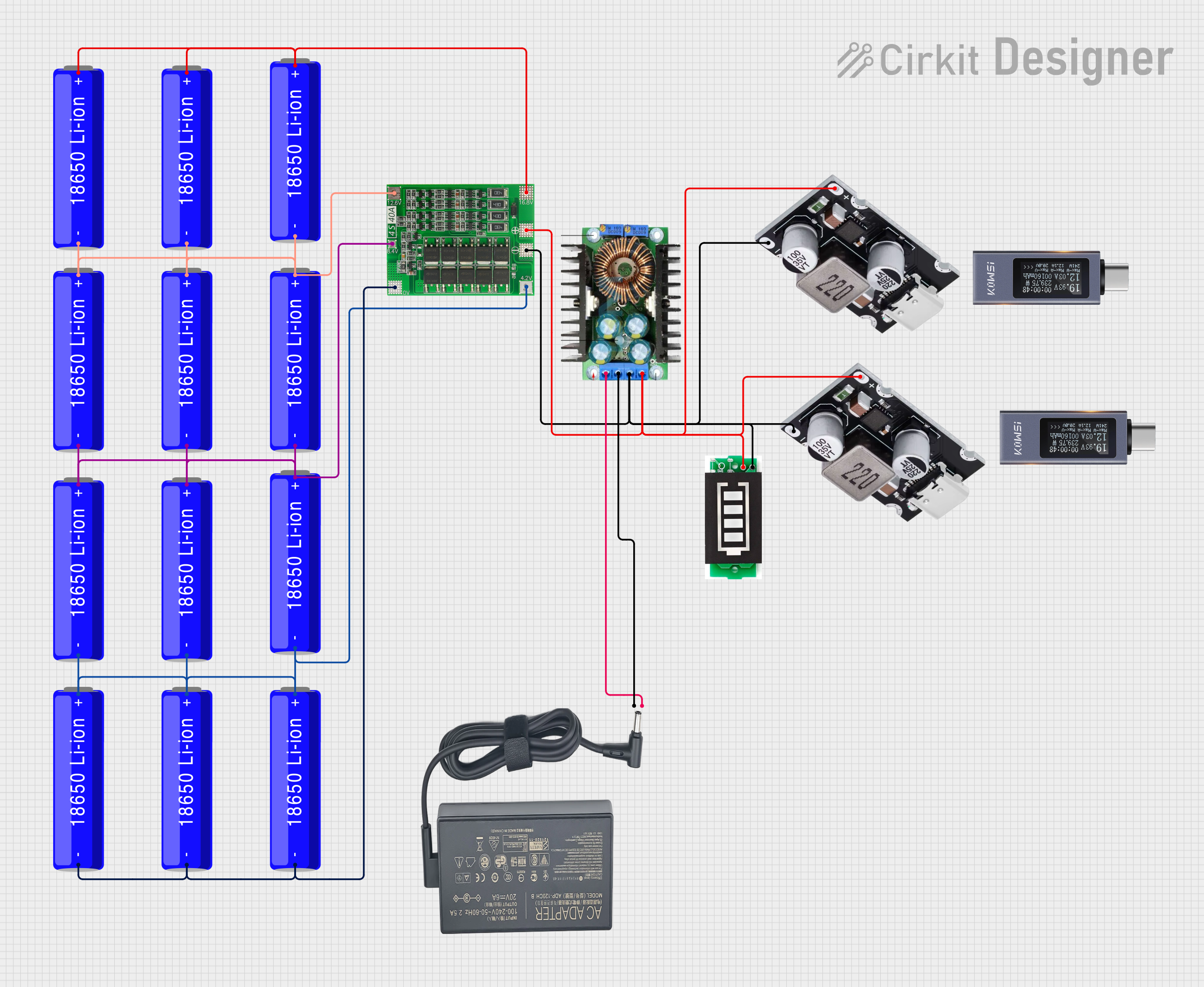
 Open Project in Cirkit Designer
Open Project in Cirkit Designer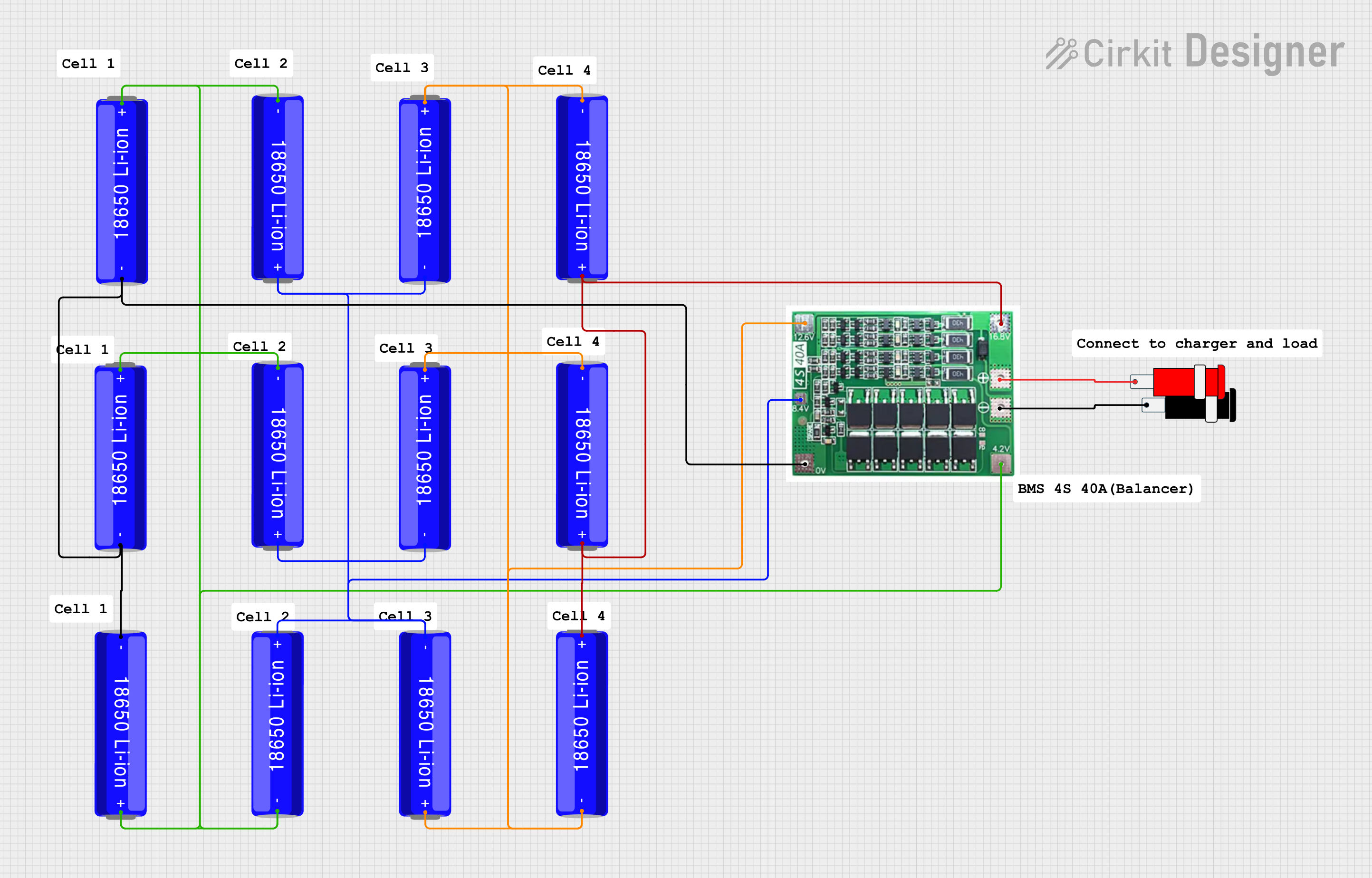
 Open Project in Cirkit Designer
Open Project in Cirkit Designer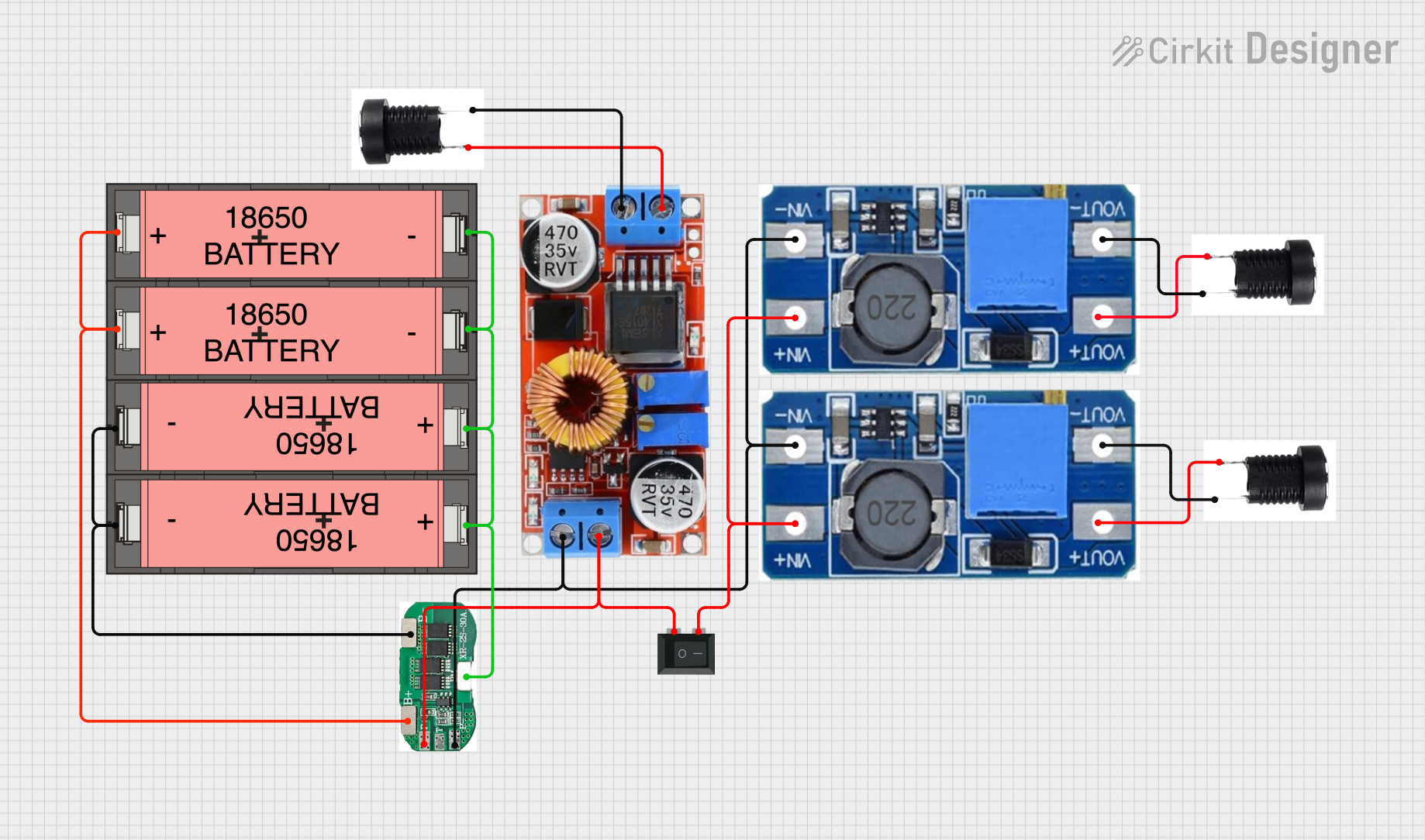
 Open Project in Cirkit Designer
Open Project in Cirkit Designer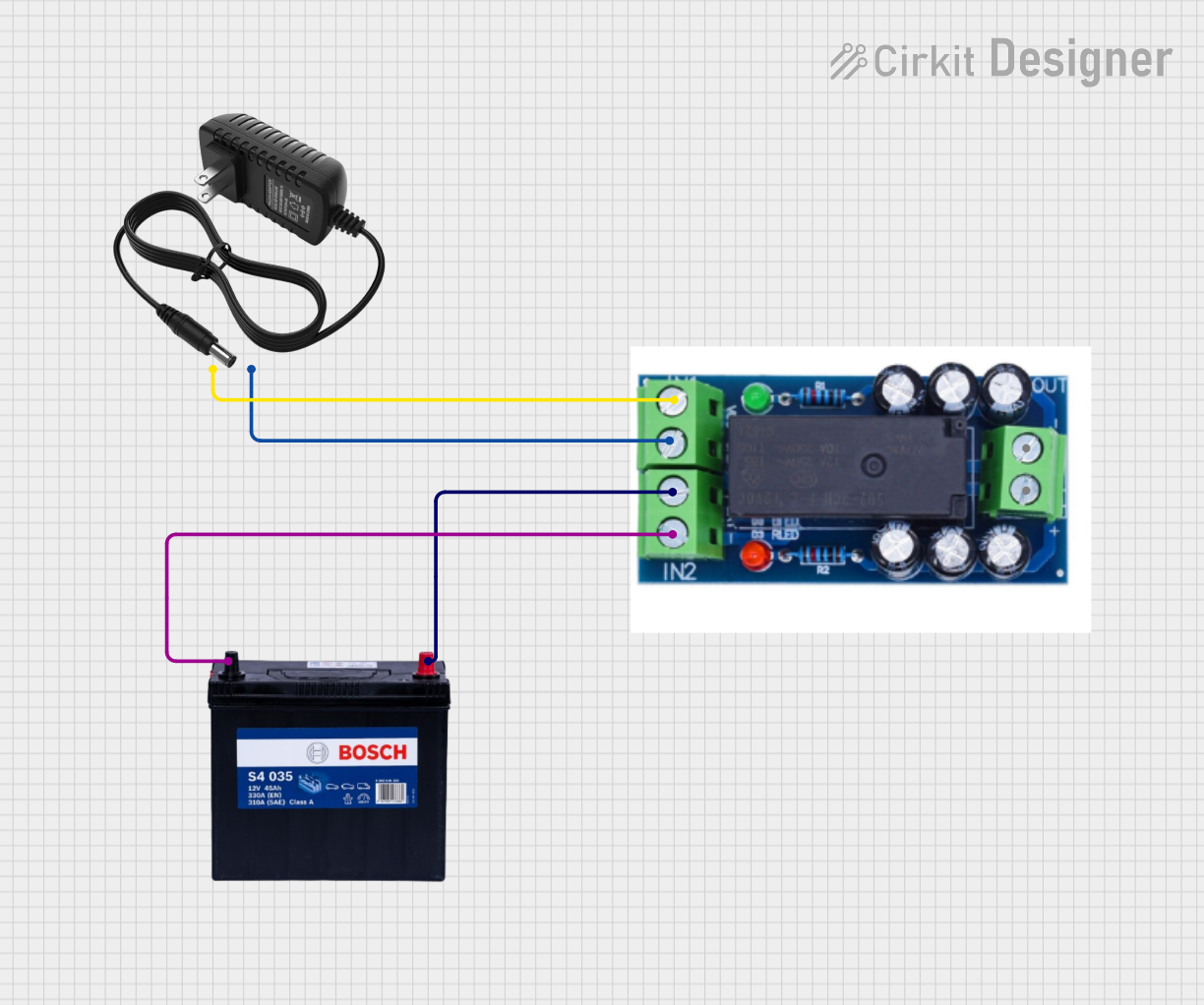
 Open Project in Cirkit Designer
Open Project in Cirkit DesignerExplore Projects Built with 12V 4.5AH BATTERY

 Open Project in Cirkit Designer
Open Project in Cirkit Designer
 Open Project in Cirkit Designer
Open Project in Cirkit Designer
 Open Project in Cirkit Designer
Open Project in Cirkit Designer
 Open Project in Cirkit Designer
Open Project in Cirkit DesignerCommon Applications and Use Cases
- Backup power for UPS systems
- Emergency lighting systems
- Security and alarm systems
- Portable electronic devices
- Small solar or wind energy setups
- Robotics and hobbyist projects
Technical Specifications
The following table outlines the key technical specifications of the 12V 4.5AH battery:
| Parameter | Specification |
|---|---|
| Nominal Voltage | 12V |
| Capacity | 4.5Ah |
| Chemistry | Sealed Lead-Acid (SLA) |
| Maximum Charging Voltage | 14.4V - 15.0V |
| Float Charging Voltage | 13.5V - 13.8V |
| Maximum Discharge Current | 67.5A (for 5 seconds) |
| Operating Temperature | -15°C to 50°C |
| Dimensions (L x W x H) | ~90mm x 70mm x 101mm |
| Weight | ~1.5kg |
| Terminal Type | F1 or F2 Faston Tabs |
| Cycle Life | ~200-300 cycles (at 50% depth of discharge) |
Pin Configuration and Descriptions
The 12V 4.5AH battery typically has two terminals for electrical connections:
| Terminal | Description |
|---|---|
| Positive (+) | Connects to the positive side of the circuit |
| Negative (-) | Connects to the negative side of the circuit |
Usage Instructions
How to Use the Component in a Circuit
Connecting the Battery:
- Identify the positive (+) and negative (-) terminals of the battery.
- Use appropriate connectors (e.g., Faston tabs) to securely attach wires to the terminals.
- Ensure the polarity is correct when connecting the battery to your circuit to avoid damage.
Charging the Battery:
- Use a compatible SLA battery charger with the correct voltage and current ratings.
- Set the charger to the recommended charging voltage (14.4V - 15.0V for cyclic use or 13.5V - 13.8V for float use).
- Avoid overcharging or deep discharging the battery to extend its lifespan.
Discharging the Battery:
- Ensure the load connected to the battery does not exceed its maximum discharge current.
- Monitor the battery voltage during use and avoid discharging below 10.5V to prevent damage.
Safety Precautions:
- Do not short-circuit the terminals.
- Avoid exposing the battery to extreme temperatures or direct sunlight.
- Handle the battery with care to prevent physical damage or leakage.
Important Considerations and Best Practices
- Ventilation: Ensure proper ventilation when using the battery to prevent heat buildup.
- Storage: Store the battery in a cool, dry place when not in use. Recharge it every 3-6 months to maintain capacity.
- Wiring: Use appropriately rated wires and connectors to handle the current safely.
- Arduino Integration: When using the battery to power an Arduino UNO, use a voltage regulator (e.g., LM7805) to step down the voltage to 5V. Below is an example circuit and code for powering an Arduino UNO with the battery.
Example Code for Arduino UNO
// Example code to blink an LED using an Arduino UNO powered by a 12V 4.5AH battery
// Ensure a voltage regulator is used to step down the 12V to 5V for the Arduino
const int ledPin = 13; // Pin connected to the onboard LED
void setup() {
pinMode(ledPin, OUTPUT); // Set the LED pin as an output
}
void loop() {
digitalWrite(ledPin, HIGH); // Turn the LED on
delay(1000); // Wait for 1 second
digitalWrite(ledPin, LOW); // Turn the LED off
delay(1000); // Wait for 1 second
}
Troubleshooting and FAQs
Common Issues Users Might Face
Battery Not Charging:
- Cause: Faulty charger or incorrect charging voltage.
- Solution: Verify the charger is functioning correctly and set to the recommended voltage.
Battery Drains Quickly:
- Cause: Over-discharge or aging battery.
- Solution: Avoid deep discharges and replace the battery if it has reached the end of its cycle life.
Battery Overheats During Use:
- Cause: Excessive current draw or poor ventilation.
- Solution: Ensure the load does not exceed the maximum discharge current and provide adequate ventilation.
Corroded Terminals:
- Cause: Exposure to moisture or improper maintenance.
- Solution: Clean the terminals with a baking soda solution and apply a protective coating.
Solutions and Tips for Troubleshooting
- Always use a multimeter to check the battery voltage and ensure proper operation.
- If the battery is not holding a charge, test it with a load to determine its capacity.
- For long-term storage, disconnect the battery from the circuit and recharge it periodically.
By following these guidelines, you can ensure the safe and efficient use of the 12V 4.5AH battery in your projects and applications.